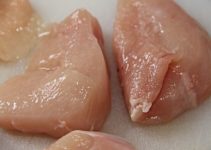Last Updated on November 2, 2022 by E.Pery
Many people are fearful of eating food from the refrigerator after a power failure. However, you need not throw all the content of your fridge because of a power cut.
According to the Centers For Disease Control And Prevention (CDC), food can stay fresh in the refrigerator for up to 4 hours after a power outage. Some types of food can last up to 6 hours in the refrigerator and up to 24-48 hours in the freezer.
However, to prevent food poisoning, you need to know what type of food you can keep and what you need to toss in the bin after a power outage, depending on how long it has been since the power went off.
This article gives you a few food safety tips to help you make these decisions in an emergency.
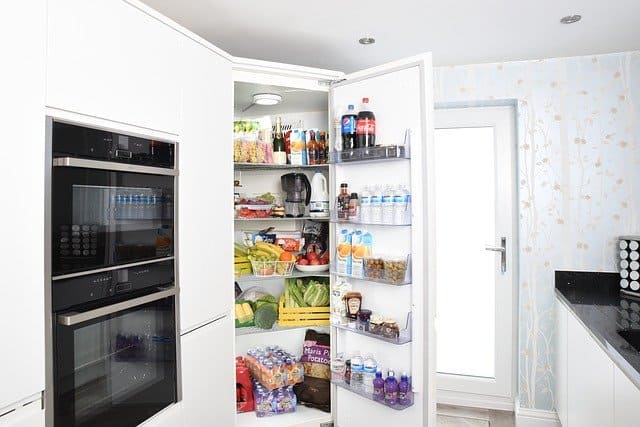
How long is food safe in the refrigerator without power?
Bacteria multiply in neutral or slightly acidic food like meat, poultry, and vegetables, especially at a warm temperatures. Without power, these temperatures begin to rise and potentially reach a level that encourages bacterial growth in the food and compromises its safety.
Recommended reading: What Temperature Should A Refrigerator Be?
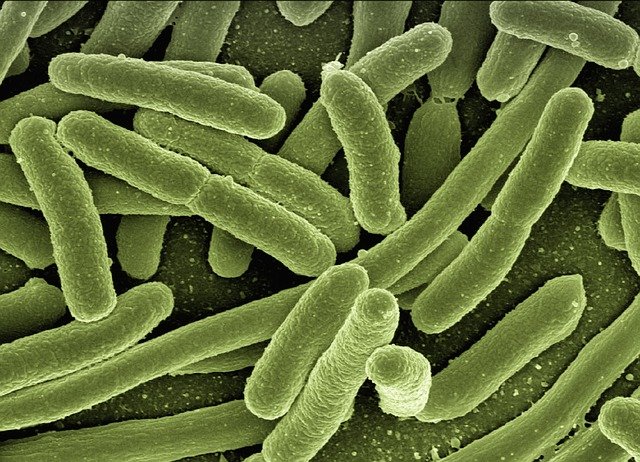
To prevent bacteria growth that could cause foodborne illnesses, you should ensure that the temperature in your fridge is set below 40 degrees Fahrenheit and 0 degrees Fahrenheit in your freezer.
Food can stay safe for up to 4 hours in the refrigerator at this temperature, 24 hours in a half-full freezer, and 48 hours in a full freezer.
Tip: Keep your fridge and freezer doors closed as soon as the power goes out. Opening your refrigerator and freezer doors lets in warm air that raises the temperature.
Recommended reading: Best Top Freezer Refrigerator [Top 5 Reviews] Best Refrigerator Bottom Freezer [Top 5 Reviews]
The food will be safe for consumption if power is restored within this time frame. However, if you opened the refrigerator doors during that time, significantly more than once, there are chances that some food may not be safe to consume.
Regardless of the situation, when power is restored within the recommended time frame, you should check whether food is no longer fit for consumption.
Never taste food to find out whether it’s good or bad. Instead, check the temperature of the food and determine whether it is still safe and check for unusual scents, textures, or colors and discard them.
If the power outage lasts for longer than the specified time limits, all perishable foodstuffs should be thrown out to prevent chances of food poisoning.
Power out for 12 hours refrigerator?
You don’t need to throw away your food, but you do need to take steps to keep it safe.
Foods like fruits and vegetables may lose some nutrients and color, but they’re still safe to eat. The main thing is to prevent them from spoiling by keeping them cool.
If the power is out for more than a day, throw out any meat, poultry, or eggs that have been above 40 degrees Fahrenheit (4 degrees Celsius) for two hours or more.
Power out for 24 hours refrigerator?
The Food and Drug Administration’s recommended guidelines for handling a power outage are:
Refrigerated foods should be thrown away if they have been above 40 degrees Fahrenheit for more than two hours.
Frozen foods should be thrown away if they have been above zero degrees Fahrenheit for more than four hours;
Those guidelines don’t apply to all foods, especially those that are canned or packaged in jars or bottles. But if you’re not sure about whether your food is safe to eat, check with the manufacturer or contact your local health department or agriculture extension office (look under “commodity” or “agriculture” in your phone book).
How long can a fridge stay cold without power?
A refrigerator will stay cold for a few hours without power. If your appliance is plugged in, it will keep working until the power goes out.
When the power goes out, the temperature inside the refrigerator will rise quickly. The food inside can spoil in as little as four hours.
You can slow down this process by running a fan or opening and closing the door every once in a while, but this only works for so long.
Once all of the cold air has been used up, your refrigerator will stop working completely.
In most cases, it is not recommended to keep food in a refrigerator overnight without power. Even if the electricity is restored after a few hours, there is no guarantee that it will stay on for a long.
The food inside your refrigerator will not go bad immediately after a power outage. However, it may lose some of its freshness and flavor over time. This is especially true for meat and dairy products, which are more susceptible to bacteria growth than other foods.
how to keep the fridge cold without power?
Home refrigerators and freezers need electricity to keep food cold, but what happens when the power goes out?
If you’re in a situation that requires emergency preparedness, such as a hurricane or snowstorm, you’ll want to make sure your refrigerator stays cold. If you don’t have power for more than a day or two, find some other way to store food until it’s safe to eat again.
Here are 3 ways to keep your refrigerator cold without electricity:
- Move it outdoors
- Use ice packs
- Use fans
1. Move it outdoors
One option is to move your refrigerator outdoors so that it doesn’t require any power at all. The downside is that it will be exposed to heat, humidity, and insects outside. If you do this, keep an eye on it so that animals don’t get into it or leave doors open too long.
2. Use ice packs
You can also use ice packs and towels or blankets in your refrigerator to help keep it cool enough for food storage. Be sure not to put them on top of and around containers of food because they could freeze and crack them open.
3. Use fans
Fans can help circulate air around in your refrigerator so that the temperature stays lower than if there were no circulation at all. Use fans only with open doors.
what should I throw out of the freezer after a power outage?
If you lose power for more than 4 hours, immediately throw away any food that has been at a temperature above 40°F.
This means ice cream, frozen dinners, raw meat and fish, and even frozen vegetables. These foods are safe to eat once they have been refrigerated properly (cold enough to keep bacteria from reproducing).
The same applies to any unopened food in your refrigerator. If you lost power for more than 4 hours, throw away any raw meat or poultry as well as any leftovers that were stored at room temperature for more than 2 hours.
You also need to throw out any opened jar of peanut butter or other nut products because they can go bad quickly when exposed to warm temperatures.
Tips on how to keep food safe during and after an electric failure
As soon as the power goes out, keep the refrigerator doors closed to maintain the set temperature. The 4 hours safety rule in the refrigerator only applies when the fridge and freezer door is kept close the entire time. The same applies to a half-full and full freezer.
Get block or dry ice as soon as the power goes out to keep the refrigerator as cold as possible. If your refrigerator is about 18 cubic feet, dry ice weighing 50 pounds could keep your fully stocked freezer cold for 48 hours.
You should check whether your refrigerator was more than 40º F for more than two hours and 90 º F for more than an hour; it is advisable to toss all fish, poultry, meat, or eggs in the bins.
Recommended reading: How Long Do Hard-Boiled Eggs Last In The Fridge?
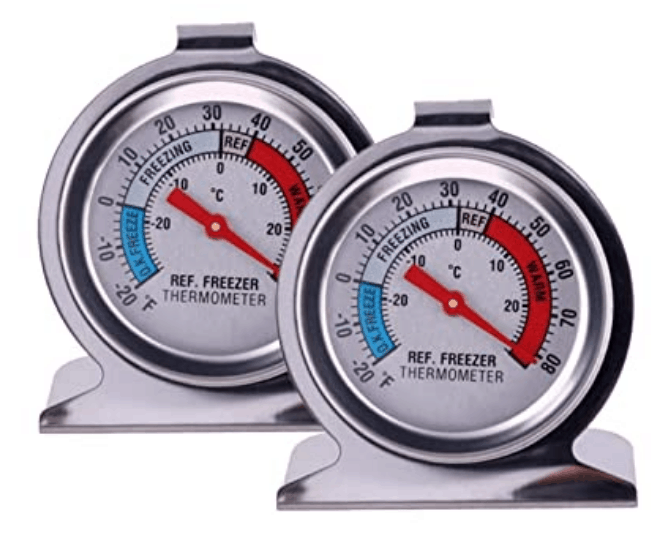
However, if they are still within the safe temperature when power gets back, and you wish to consume them, it’s recommended that you cook them thoroughly to kill any foodborne bacteria that may be present.
Tips for keeping food safe once power is restored
Determine whether the food is good for consumption by checking whether the freezer is below 0 degrees F and 40 degrees F in the refrigerator. If it is, the refrigerated food is safe for consumption.
If you had not installed an appliance thermometer in your refrigerator, check the safety of the foodstuff by checking whether they give off an odor or have changed in color. However, the food is safe to cook or refreeze if it still contains ice crystals on it.

Cook and consume perishable foodstuffs with a temperature above 40 f but below 45 degrees F as soon as possible to avoid food poisoning.
Which foodstuffs should you throw away after an electric failure outage?
You should throw away the following perishable food in your refrigerator after 4 hours of losing power:
- Raw or cooked meat, poultry, fish, soy-based foods, and seafood.
- Milk, yogurt, cream, soy milk, and other dairy products
- Eggs and egg-based foods
- Cut or cooked vegetables
- Cut fruits
- Packaged greens
- Open vegetable and fruit juices
- Cooked pasta or rice
- Opened baby formula
- Salad with creamy dressing, custard, or gravy
- Batter or dough
- Soft cheeses
- Tartar sauce, mayonnaise, or horseradish
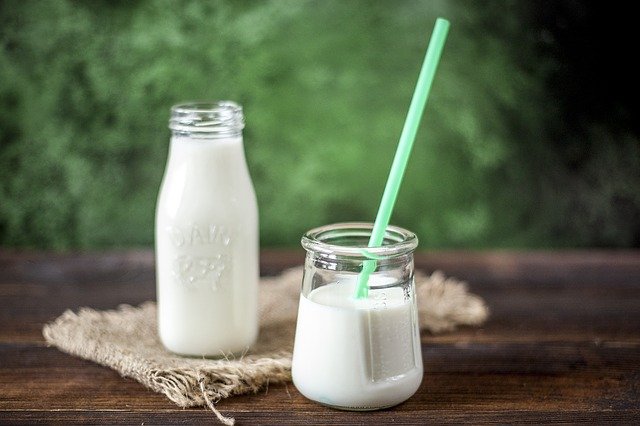
You should also check whether any foodstuff has come into contact with the juices dripping from seafood, poultry, or meat and throw it out. Also, check for items with a foul smell, a different color, or texture and discard them.
Foodstuffs that should be thrown out of the freezer if the power outage extends a day or two include:
- All the items mentioned above that have been stored in the freezer
- Ice cream
- Sour cream
- Frozen pizzas, tacos containing sausage or bacon, TV breakfast or dinner sandwiches
- Cheesecake and other custard or cream-based desserts
The only foods that are safe to eat after the recommended time frame are the ones that have ice crystals in them. Although the quality and taste of the food could be different, it is safe for consumption or refreezing.
Which food items are safe to keep after a power outage?
Not everything in your fridge needs to be tossed out when experiencing a power outage for extended periods. Some foods are too acidic for bacteria to grow on them. Hence the process of decomposition is slower for such foods during power outages. These foods include:
- Pickles and relish
- Ketchup
- Olives
- Mustard
- Vinegar-based salad dressings
- Jelly
Although these foods take longer to spoil than other foods, they may spoil sooner than they usually would with an electric failure. So it’s always good to check whether they are edible by sniffing them before consumption.
If you keep foodstuffs that do not require refrigeration in the fridge, they are also safe to eat. Such foods include:
- Whole vegetables
- Whole fruits
- Baked items that have no cream-based icing, filing, or topping
- Hard cheeses like romano, cheddar, parmesan, and swiss
- Peanut butter
- Butter and margarine
- Herbs
You should, however, check if any of these foods have turned moldy or developed an odd smell. If they have, you should throw them out right away.
8 Food preservation tips for when you know a power outage might be a possibility
Here are some food safety tips to help you minimize food loss and prevent health hazards well before an emergency power outage.
- Ensure That Your Appliance Has A Thermometer In Both The Freezer And Main Compartment
- Always Have A Pack Of Ice In Your Freezer
- The Temperature In The Freezer Is Lower Than The Temperature In The Fridge
- Group Foodstuffs Together In The Freezer
- Invest In A Cooler
- Freeze Gel Packs, Make Ice Cubes In Advance
- Keep Non-Perishable Foods On Hand
- Fill Up Your Fridge And Freezer To Hold The Temperatures Within The Optimum Range
1. Ensure that your appliance has a thermometer in both the freezer and main compartment
You also need to check whether the temperatures in the freezer are 0° F and below 40° F in the refrigerator.
In case of a power emergency, the readings on the thermometer will enable you to determine the safety of the food.
Recommended reading: What Temperature Should A Refrigerator Be?

2. Always have a pack of ice in your freezer
You can do this by freezing water containers for ice, which you could use to keep the food cold in the fridge, freezer, or cooler during a power outage.
The melting ice could also be a refreshing water source when the power is out on a sunny afternoon.
Recommended reading: How Long Does It Take A Fridge To Get Cold?
3. The temperature in the freezer is lower than the temperature in the fridge
So you can keep the most perishable foods such as leftover milk, poultry, and meat that you want to save for later. The cool atmosphere keeps these perishables refrigerated for longer than they could in the fridge.
4. group foodstuffs together in the freezer
It is also good to group foodstuffs together in the freezer as this enables them to prevent warm air from passing through them and keep the food cold for longer.
Recommended reading: How To Organize Refrigerator? [11 Simple Steps]
5. Invest in a cooler
Especially if you live in an area that is prone to power outages. Coolers will enable you to keep the foodstuffs fresh even after four hours of staying in the fridge during the blackout.
6. Freeze gel packs, and make ice cubes in advance
Use them in a cooler or refrigerator during a power cut to keep the food cold. If you learn of a power outage beforehand, you could purchase block ice and dry ice in advance to keep everything fresh during the power cut.
7. keep non-perishable foods on hand
If you live in an area that experiences several power interruptions, keep plenty of non-perishable foods on hand. This prevents you from opening your freezer or refrigerator during a blackout.
8. Fill up your fridge and freezer to hold the temperatures within the optimum range
You could fill up the empty spaces in your freezer with perishable items from the refrigerator. Alternatively, fill the freezer with ice cubes or frozen water to help keep the food cold.

E Pery is the founder of refrigerator.deals and a webmaster. He runs his own websites and loves… refrigerators! Convinced that buying and maintaining a refrigerator is not easy, he decided to create refrigerator.deals, in order to help people make the right choices.
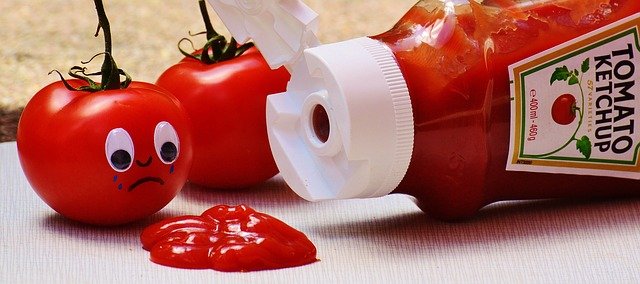







![8 Refrigerator brands to avoid [3 to consider]](https://refrigerator.deals/wp-content/uploads/2021/08/Refrigerator-Brands-To-Avoid-211x150.jpg)
![How To Defrost A Refrigerator? [6 simple methods]](https://refrigerator.deals/wp-content/uploads/2021/08/How-To-Defrost-A-Refrigerator--211x150.jpg)
